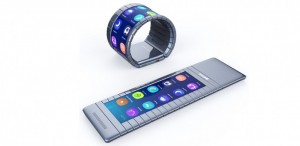Bendable Gorilla Glass? Come on!
Recently, we’ve profiled Gorilla Glass and Vibrant Gorilla Glass. Corning, the manufacturer of Gorilla Glass – which virtually owns the mobile device market – says it may be able to deliver “bendable” Gorilla Glass to the market within 2-3 years.
Flexible glass displays already possible
The company is not willing to commit to a deliver schedule, but says that it’s working on creating reliable flexible glass displays, largely for wearable mobile devices. According to the company, flexible glass isn’t the major issue; the company can already make glass that’s thin enough to flex. To make a highly flexible mobile device work, flexible electronics and flexible batteries must also be part of the package.
Last month, China-based Chongqing Graphene Tech Co., known informally as the Moxi Group (pronounced mou-shee), says it’s getting ready to introduce a flexible touchscreen phone to the marketplace. That device uses a graphene display, rather than one made of flexible glass. The company says its first market product will have a black-and-white display, but it plans to introduce a full-color display by 2018. The expected price for the first product, which will hit the domestic market in the fourth quarter, will be about $750.
According to the Moxi Group, full color displays are more challenging, in part because of their increased power requirements. Color displays require more power. In a mobile device, that translates to improved battery performance. Either a flexible battery or a smaller, more powerful battery would need to be developed to provide acceptable performance for a highly flexible color display.
Samsung and LG both have “flexible” phones, but neither of those devices can be flexed as much as the device to be marketed by Moxi. Moxi Group’s device, which is a candy-bar style phone can be looped into a closed ring. Samsung says it will bring a highly flexible phone to the market in 2017. According to the company, that product is flexible enough to be rolled up and stored in a pocket.
Flexible batteries may be available in the near future. Cooperative research teams in the US, South Korea and China say they’ve developed a highly flexible solar battery for use in wearable electronic devices. The battery, which does not need to be charged, incorporates solar cells into a flexible silicone shell with a flexible copper matrix. The silicone shell makes the battery waterproof, and developers say it can be flexed into virtually any shape.
There’s no timetable on the availability of flexible glass, but if you need inspiration for decorating with non-flexible glass, please check out the rest of the Glassprimer™ glass paint site. If you’d like to purchase Glassprimer™ glass paint, please visit our online store .
Photo Credit: Moxi Group

